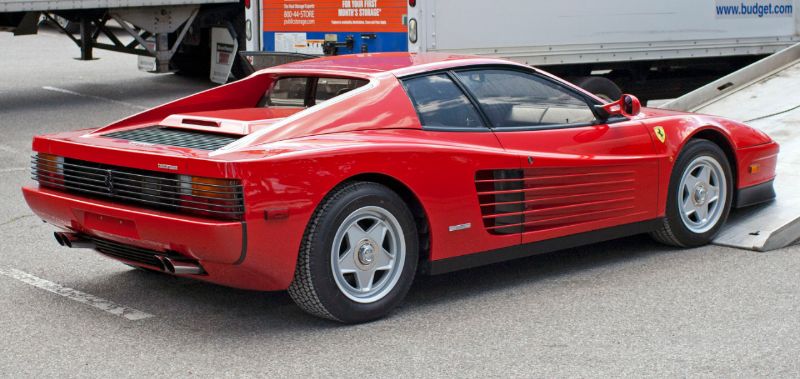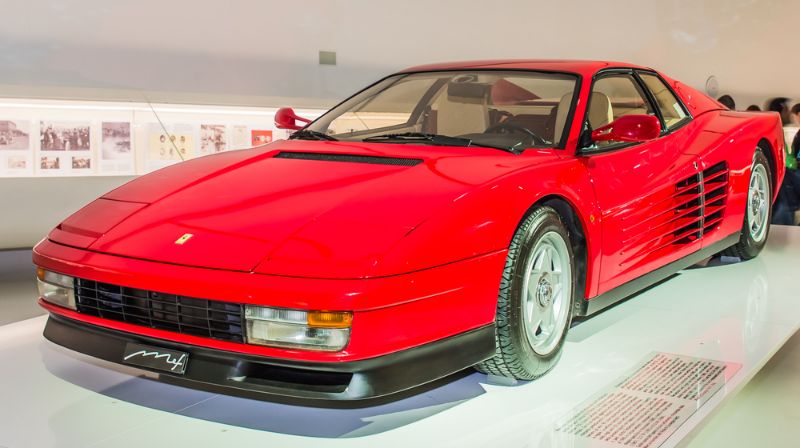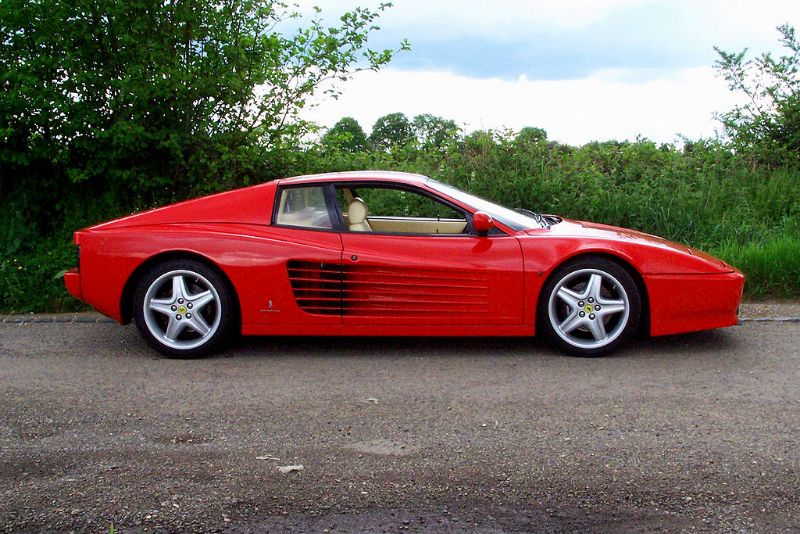Ferrari Testarossa

The Ferrari Testarossa is one of the most iconic Ferrari sports cars, manufactured between 1984 and 1996 and assembled in Maranello, Italy. This mid-engine sports car was the successor of the Ferrari Berlinetta Boxer. Despite the logical assumption based on the production years for this vehicle, the main production was just from 1984 to 1991. The 1992 to 1996 versions were revisions called the 512 TR as well as the F512 M. Overall, the Testarossa counts as one of Ferrari’s mass-produced vehicles. There were nearly 10,000 Testarossas produced in total, including the later 512 TRs and the F512 Ms.
The Testarossa first made its debut as a two-door coupe during the Paris Auto Show in 1984. Every single variation of this Ferrari sports car offered a rear-mounted 5-speed manual transmission. The layout of the rear-wheel-drive and a rear mid-engine allows for a center of gravity that was truly in the center of the vehicle, delivering great cornering and stability.

In some ways, the Testarossa honored the Ferrari 250 Testa Rossa, which was the race car that famously won 24 Hours of Le Mans three times: 1958, 1960, and 1961. The name also literally translates to “redhead,” referring to the red paint on the engine’s cam covers.
The Testarossa is known for its imposing size and the strong sense of attitude. It is also known for its ultra-wide rear track and side strakes. Those strakes were one of the many aerodynamic elements incorporated into the Testarossa. The exterior featured influences from wedge styling, although the other features were more noticeable than those influences. This supercar was also highly user-friendly. The new dashboard showed off Ferrari’s new trend of refinement, adding to the sense of comfort. There was a more refined, cleaner appearance in the cabin. Its performance was nice and smooth, thanks to the free-revving flat-12. Compared to the BBs, it also had excellent handling.

The 512 TR (TestaRossa) debuted in 1992 during the Los Angeles Auto Show. It was almost fully new, including improvements to the weight distribution. The F512 M made its debut two years later during the Paris Auto Show. The M stands for “modificata,” which is Italian for “modified.” This version also had the weight improvement. It also used the last flat-12 engine that Ferrari would produce. At the end of the Testarossa’s reign in 1996, Ferrari replaced it with the 550 Maranello coupe, which had a front engine.
